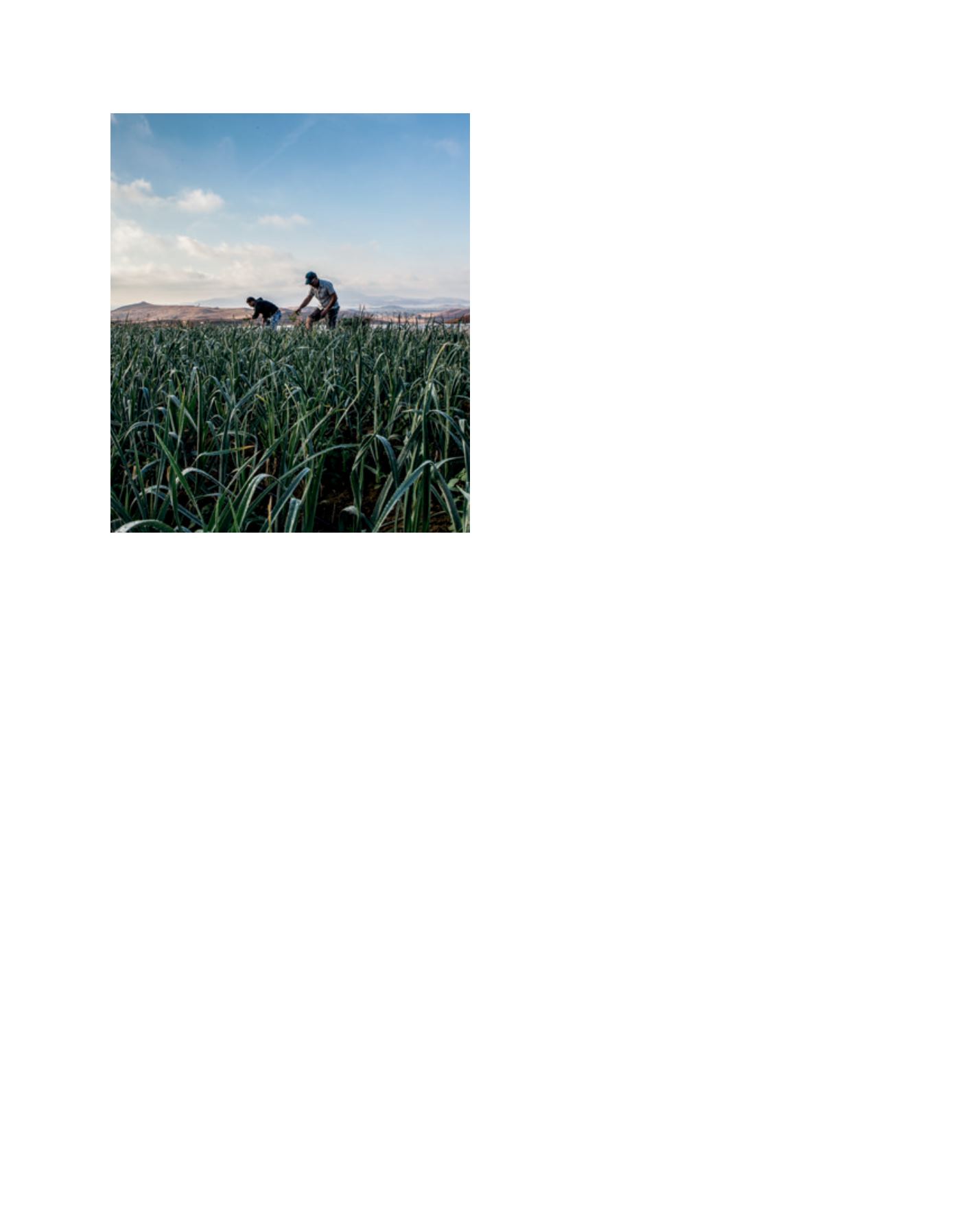

[
] 198
family farms have come together to form the cooperative,
providing support to ensure they are able to develop a viable
income from their farms. Initially, the cooperative focused on
developing short supply chains to capture more of the profit
from their produce, build relationships with their consumers
and raise awareness of their farms. This led to the realization
that they needed processing facilities to add the maximum
value to their products. In 2008, they secured funding through
their LEADER
18
Local Action Group and built a multipurpose
processing barn as a community project, including a juicing
and preserves room, herb processing facilities, a meat-cutting
room and a dairy. Following this success the cooperative has
added further value to its products through catering and the
sale of ‘street food’ in its mobile café, and is extending this
initiative into a mobile shop to service local rural areas.
19
Short supply chains
Local food supply chains make it easier for customers to iden-
tify the origin of their purchases, and they are often willing to
pay a premium for fresher and healthier options. By strength-
ening the relationship between consumers and local farmers,
such supply chains promote local family enterprise and boost
regional identity.
The organization of food chains is a priority in the 2014-
2020 rural development policy.
20
The EAFRD-funded
measures aim to help family farmers to sell their products
directly to consumers
21
or at least to become involved in
short supply chains, and to better integrate family farms
into distribution channels by providing support for quality
schemes,
22
adding value to agricultural products, promotion
in local markets and short supply chains, producer groups
and inter-branch organisations.
23
In addition, the LEADER
approach will continue to provide Local Action Groups with
the grounds they need to support innovative and experimen-
tal approaches to stimulate direct sales and the development
of local food markets, where foreseen as part of the Local
Development Strategy.
Case study:
A Hungarian family farm in the Borsod-Abaùj-
Zemplén region grows and sells local fruit varieties and the
family also runs a tourist attraction, whose visitor numbers
are increasing. To strengthen the overall viability of the family
business, the farm’s operations were expanded to include
added-value fruit products. EAFRD funding helped to partly
offset the total cost for the purchase of modern fruit process-
ing equipment, compliant with EU food quality standards.
The fruit processing plant has shortened the supply chain for
quality fruit products, adding value to local agricultural prod-
ucts and enhancing the economic sustainability of both the
beneficiary’s family business and other local fruit growers.
24
Adding value
Many regional specialities and traditional foods are produced
on family farms – foods that are closely associated with the
farms they came from. Many of these can qualify for status
as protected Geographical Indications (GIs). This is a proven
way for small farmers to communicate directly with the wider
market, but also to protect valuable assets in the names and
traditions of local specialities.
The CAP includes schemes to protect farmers’ rights and
traditional products, by protecting product names from
misuse and imitation and helping consumers by giving
them information concerning the specific character of the
products. These are the GI schemes which cover agricultural
products and foodstuffs closely linked to a geographical area,
and the ‘Traditional Speciality Guaranteed’ scheme which
highlights traditional character, either in the composition
or means of production.
25
The future of family farms
Family farming has survived in Europe over centuries,
re-emerging from crises, wars and natural disasters, adjust-
ing to changing economic fortunes and, in some countries,
to dramatic changes in political context. This has never been
a smooth and painless process, as many small farmers have
disappeared over decades to give way to more efficient and
competitive farms, able to adopt new inputs and technolo-
gies. It is beyond doubt that family farming will survive and
will continue to be dominant in EU agriculture as far as the
number of farms is concerned, and that traditional smaller-
scale family farming will continue to be the core of agriculture
in many regions.
With the majority of the EU’s farms being family farms,
discussion about innovative approaches to the promotion
and sustainability of the family farming model is certain to
continue. The CAP’s role in addressing the challenges set out
above and the new ones which will arise, not least as a result
of climate change, will be key to assuring the future of the
family farming sector, and with it the preservation of the EU’s
rural communities and their local economies, traditions and
agricultural practices.
Innovative approaches to the promotion and sustainability of family farming
will continue to be a subject of discussion
Image: European Commission
D
eep
R
oots
















